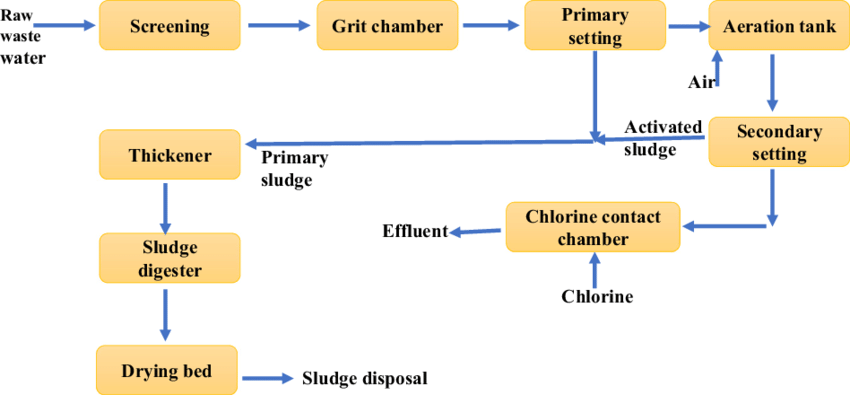How Reclaim Waste can Save You Time, Stress, and Money.
How Reclaim Waste can Save You Time, Stress, and Money.
Blog Article
10 Simple Techniques For Reclaim Waste
Table of ContentsThe Reclaim Waste Diaries5 Easy Facts About Reclaim Waste ExplainedSome Known Incorrect Statements About Reclaim Waste The Facts About Reclaim Waste UncoveredThe Reclaim Waste Ideas
Check out the kinds, incidents, and forms of fluid waste. Domestic sewage waste refers to the waste and products from a property sewage-disposal tank. This kind of waste is produced by humans in homes, institutions, and various other structures. This only consists of sewage-disposal tanks that have a drain field. The appropriate administration and disposal of residential sewer waste call for fluid waste to be moved to a sewer treatment plant where the correct approaches and devices are put on cleanse and deal with waste.
Commercial waste typically includes prospective risks, such as flammable materials or a mixture of liquid and solid waste products, and requires an extra advanced and thorough disposal procedure. The disposal of commercial waste generally includes the filtering of waste prior to transportation to ensure safe and appropriate disposal. Hazardous waste is developed from by-products and overflow of industrial procedures and manufacturing.
This type of waste can not use the very same sewage administration transport or processes as septic or industrial fluids. The hazardous waste management procedure requires the examination and screening of liquid waste before it undergoes the disposal process (liquid waste removal). Runoff waste is the liquid waste that comes from overflow and excess stormwater in extremely booming areas or cities
Overflow waste can cause contamination and flooding if not handled correctly. Guaranteeing correct waste monitoring can prevent calamities and decrease ecological harm.
The Single Strategy To Use For Reclaim Waste
Contact PROS Providers today to discover our waste management and disposal solutions and the appropriate ways to take care of the fluid waste you produce.
(https://www.pubpub.org/user/leon-aube)This supposed 'wastewater' is not only an important source yet, after treatment, will be launched to our land, waterways or the ocean. Made use of water from commodes, showers, bathrooms, kitchen area sinks, laundries and commercial processes is recognized as wastewater.

water used to cool machinery or tidy plant and devices). Stormwater, a type of wastewater, is overflow that flows from farming and city areas such as roof coverings, parks, gardens, roads, courses and gutters right into stormwater drains pipes, after rain. Stormwater moves neglected straight to local creeks or rivers, at some point reaching the sea.
Reclaim Waste for Dummies
In Queensland, the majority of wastewater is dealt with at sewer therapy plants. Wastewater is delivered from residential or commercial sites via a system of sewers and pump stations, called sewage reticulation, to a sewer treatment plant. Regional governments develop, preserve and operate most sewer therapy plants. Operators are certified under the Environmental Management Act 1994 to discharge cured wastewater at an appropriate environmental requirement into waterways.
The Division of Natural Resources suggests local governments concerning handling, operating and preserving sewerage systems and therapy plants. In unsewered locations, local governments may require owners to mount specific or house sewage treatment systems to deal with domestic wastewater from commodes, kitchen areas, bathrooms and laundries. The Division of Natural Resources authorises making use of house systems when they are shown to be reliable.
The majority of stormwater gets no therapy. In some brand-new neighborhoods, treatment of some stormwater to get rid of trash, sand and crushed rock has started making use of gross contaminant catches. Wastewater treatment occurs in 4 stages: Removes solid issue. Larger solids, such as plastics and various other objects mistakenly discharged to sewage systems, are eliminated when wastewater is travelled through displays.
Wastewater then flows right into big storage tanks where solids settle and are gotten rid of as sludge. Oil and residue are skimmed from the surface. Makes use of tiny living microorganisms recognizes as micro-organisms to break down and eliminate remaining dissolved wastes and great fragments. Micro-organisms and wastes are incorporated in the sludge. Eliminates nitrogen and phosphorus nutrients that can cause algal flowers in our rivers and threaten water life.
Some Known Incorrect Statements About Reclaim Waste
Nutrient elimination is not readily available at all sewer therapy plants since it needs costly specialist tools. Clear fluid effluent produced after treatment might still include disease-causing micro-organisms - liquid waste disposal.

This usually implies wastewater needs to be dealt with or contaminants gotten rid of before it can be released to rivers. Many wastewater streams right into the sewerage system. Under the Act, neighborhood governments provide authorizations and permits for ecologically appropriate tasks (Periods) including wastewater releases that could have a regional impact. The division administers authorizations and licences to Periods including wastewater launches that may have a regional or statewide influence.
Reclaim Waste - An Overview
Or else, samples are taken for research laboratory analysis. Often lots of examinations are needed to develop the levels of each of the various contaminants such as oils, heavy metals and pesticides in water. Tracking gives accurate details about water quality and can verify that permit conditions are being satisfied. The details gotten via surveillance provides the basis for making water quality decisions.
Report this page